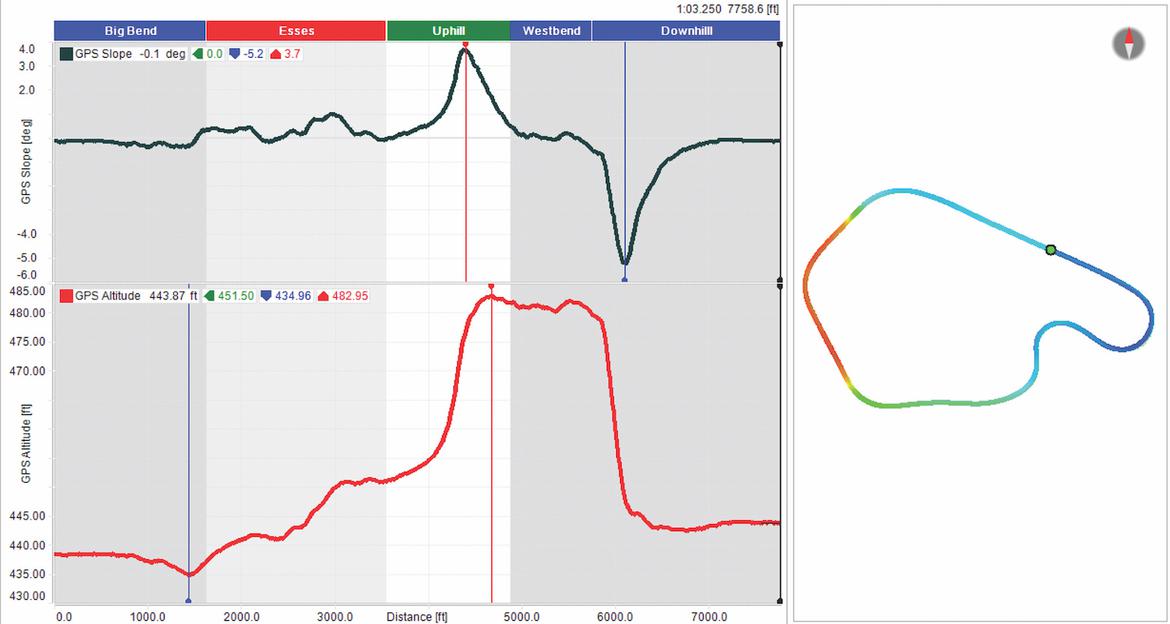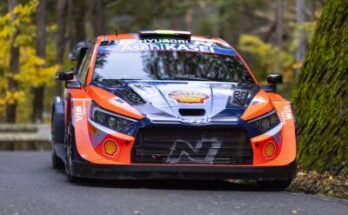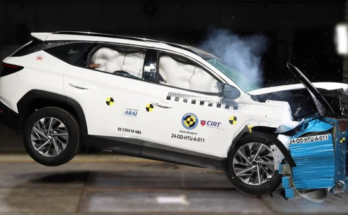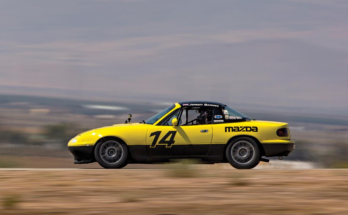Let’s say you have a data system and can handle the basics: lap times, max speeds, lap comparisons. But have you thought outside the box about what that equipment can also reveal? Here are some creative ways to use your data system.
Know the True Track Length
One of my favorite circuits, Lime Rock Park in northwest Connecticut, bills itself as a 1.53-mile bullring of a track. But when you drive the racing line and measure it with a data system, its length is closer to 1.43 miles. Another fan favorite, Road America, is listed as a 4.048-mile track, but the driven line comes in at 3.99 miles.
Those differences can have significant fuel plan repercussions. Maybe you could run a bit less fuel in qualifying to save some weight. And you might be able to stretch out time between pit stops or even take one fewer.
Predict the Future With Theoretical Best Laps
While no data system can reveal your absolute best lap, it can help by monitoring your rolling best lap and providing a theoretical best lap. What are these? Imagine a rolling best lap as a timed lap measured from every point on the track–so not limited to a lap timed from the start line.
The best theoretical lap combines all your best segment times into one fast lap. How you break up the track into segments can impact this, however. For example, if maximizing your time in one segment hurts another, your theoretical best lap isn’t going to be of as much value. To maximize the theoretical best lap feature, chop up the track into three or four segments, with each one starting in the middle of a straight.
A good rule of thumb for using these two measurements: If you’re driving really consistently, you should be able to get within 0.25 second of your best rolling lap and 0.50 of your theoretical. Watch for performance plateaus, though.
Put Numbers to Feelings
How about diving deeper when comparing new parts? What does more camber do to cornering performance? Well, now you can measure not just the alignment settings but the lateral g-loads the car can pull. The same goes for suspension settings, brake pads and steering response. Also, remember that you can put numbers to the setting sweeps you run on variables like tire pressures, shock settings and anti-roll bar stiffnesses.
Evaluate Parts With Real Data
All data systems have accelerometers of some sort that measure the basics: cornering, braking and acceleration. Add in speed, and then use that info to compare equipment.
Want to know which 200tw tire makes the most grip? Check the lateral acceleration data. Wondering if that new 3D-printed intake housing actually increases power, but can’t get to the dyno? Check the longitudinal acceleration and the speed traces.
In the June 2022 issue, for example, we used speed traces to compare two different Toyota MR2 brake setups. The length of deacceleration and the shape of the slope–steeper indicates more rapid slowing–showed how well the big-brake kit outperformed the stock setup.
Use Notes to Record the Entire Picture
Almost all data systems allow you to record notes with your data, so take advantage. But you already have a notebook? Putting your session notes right there with the data can save you a lot of time later.
Did new tires make that much of a difference? It’s in the notes. Were you that slow or was it raining? When the notes say “drizzling and overcast,” you’ll know the track conditions were responsible.
Also include variables like alignment settings, track congestion and how you were feeling. And don’t forget, tire pressures can always be easily tuned and recorded.
Determine Slope
Wondering how steep Turn 1 at COTA really is–which could affect your braking point? If you have a current data system that uses GPS, then you have this measurement.
While GPS isn’t the most accurate tool for track position, it does provide a great measure of elevation. Without getting into the details about those satellites flying 10,900 nautical miles above our heads, while the elevation numbers might not be exact relative to sea level, they are accurate relative to each other.
That means the climb up the front straight at COTA is 88 feet. We can also see that the slope measures 9.2 degrees. For comparison, the standard for a mountainous highway in the U.S. is 6 degrees. That’s steep!

The data analysis can tell you about the track, too. How hilly is Lime Rock Park? The data shows that The Uphill–also known as Turn 5–measures 48 feet at a grade of nearly 4 degrees. The famous Downhill corner checks in at 5.2 degrees. Photography Credit: LAT Images (BMW at Lime Rock)
Quickly Learn New Tracks
How would you like to learn new corners by studying ones you already know? Looking at the driven radius can be a great way to compare corners. Either look at your system’s included measurement or do some math: radius = abs (GPS_Speed * GPS_Speed / GPS_LatAcc) * 0.02. This will show your car’s true performance through a corner, not the radius of the middle of the track.
Formulate Better Questions
Data can do more than provide answers; it can help you formulate the questions. Start with something general and work your way down to the details. “What tires are better on my car?” becomes, “What tires create higher g-loads in lateral acceleration?” all the way to, “What tires perform better through Turn 3 on my car today?”
Now you have a question you can answer, and you can make a plan to try out both tire choices on the same day with substantially the same track conditions. The same goes for working on your driving skills: Does the car slow faster at the end of the front straight if you apply the brakes faster? Can you vary the speed of your hands on the steering wheel to change how the car turns in and follows the corner? So many questions, so much data, so little time.
Measure (Almost) Anything
If your data system allows for additional sensors, then you can measure nearly anything you want. A little searching can turn up tools like pitot tubes from RC airplanes that can measure air speed all the way to infrared tire temp sensors made at home.
People have used sensors pulled from copy machines to measure pedal position while retrofitting GM ride height sensors onto Miatas. No more guessing how much a car rolls, squats or dives when on track. Measure it.
Keep Learning
Go beyond the owner’s manual–think forums, YouTube videos and webinars hosted by those who make and sell the data systems. Once you have an idea of the system’s potential, you can dig in and see what works best for you. This lets you move away from tribal knowledge to actual data. You’ll be a better driver, have more skills, and be able to back it up.
Matt Romanowski owns TrailBrake, a data acquisition supplier and resource.



